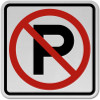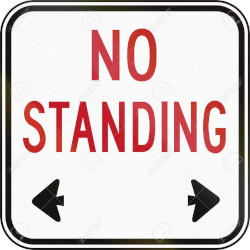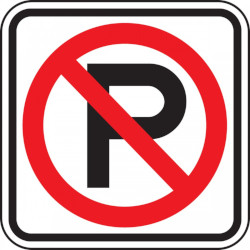 Parking, stopping or standing, what's the difference and why is it important to you as a driver? Recognizing these road signs and knowing what is allowed and what isn't with regard to these three situations can mean the difference between your convenience and being ticketed and towed for ignoring or mistaking them.
Parking, stopping or standing, what's the difference and why is it important to you as a driver? Recognizing these road signs and knowing what is allowed and what isn't with regard to these three situations can mean the difference between your convenience and being ticketed and towed for ignoring or mistaking them.
Stopping
Let's start with the simplest of the three concepts, stopping. To state the obvious, when your vehicle ceases to move, you are stopped. The term is defined in Section 119 of the Motor Vehicle Act:
"stop" or "stand" means,
(b) when prohibited, the stopping or standing of a vehicle, whether occupied or not, except when necessary to avoid conflict with other traffic or to comply with the directions of a peace officer or traffic control device;

If this road sign is posted and your wheels quit turning, you're in violation of the rules that prohibit stopping. This is usually a bylaw ticket, but if you are outside of municipal boundaries police may choose to write a violation ticket instead. There are no penalty points for this but the fine is generally $35. Double parking attracts double the penalty at $70.
Learn more about stopping.
Standing
Standing is somewhere between stopping and parking. Your vehicle is motionless but someone in control is still inside or around it. It is not a common sign and the violation occurs when everyone walks away.

The penalty for disobeying a No Standing sign is the same as No Stopping.
Parking
The last situation to examine is parking, which is almost the same as standing, but it is allowable to stop in a no parking zone for the purposes of loading and unloading as explained in the definition of park:
"park", when prohibited, means the standing of a vehicle, whether occupied or not, except when standing temporarily for the purpose of and while actually engaged in loading or unloading;

As it is with standing, the ticket penalties are the same as they are for improper stopping.
Learn more about parking.
Exemptions
If it is necessary to avoid conflict with traffic or to comply with the law or the directions of a peace officer or traffic control device, the rules about parking, standing and stopping may be disregarded.
A Word About Bylaws
Within a municipality it is more common to deal with stopping, standing and parking under the provisions of bylaws. Municipalities may create bylaws that must be consistent with the Motor Vehicle Act. These bylaws are usually published on the internet.
The Arrows at the Bottom
Arrows may be shown on the bottom of these signs to help you decide where the boundaries of the zone are. If the sign has a single arrow at either the right or left sign, you are looking at the end of the zone that is in effect in the direction of the arrow. If the sign has two arrows, one pointing in each direction, you are somewhere inside the zone.

Towing Violators
Instead of or in addition to issuing a ticket, police have the authority to have offending vehicles towed away. Costs associated with this are the responsibility of the vehicle's owner.
More About BC Highway Signs
The current version of the BC Manual of Standard Traffic Signs and Pavement Markings consists of 244 pages! It shows examples of both the sign or marking and explains how they look and are used in our province.
In contrast, the chapter on Signs, Signals and Road Markings in the provincial driver's manual Learn to Drive Smart is only 12 pages.
Share This Article
- Log in to post comments
